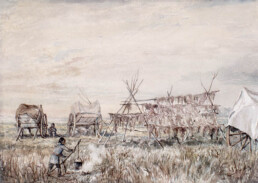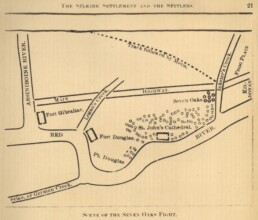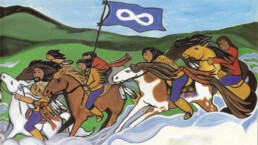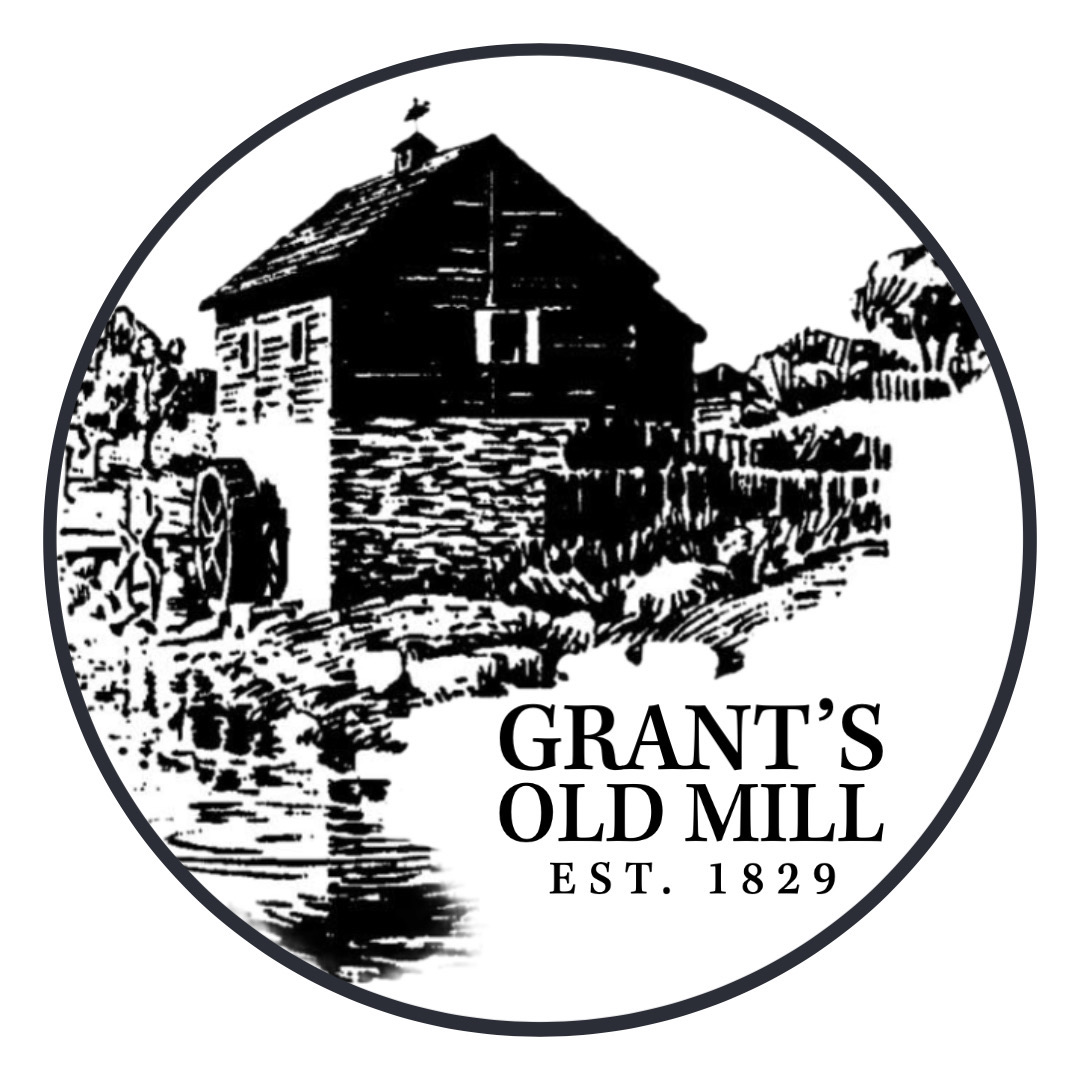Battle of Seven Oaks
Victory at Frog Plain
A crucial battle between the Métis and the Hudson's Bay Company.
Pemmican Proclamation
On 8 January 1814, Miles Macdonell, governor of the Red River Colony, issued the Pemmican Proclamation, which prohibited the export of pemmican and other provisions from the colony for one year. Macdonell claimed that the proclamation was meant to ensure that there were enough supplies for the Hudson’s Bay colony (Red River).
However, the North West Company and the Métis, who supplied the NWC with pemmican, saw the proclamation as a ploy to control the foodstuff, which was essential nourishment for NWC voyageur boat brigades travelling outside the territory.
In 1815–16, pemmican was in short supply due to environmental conditions, and the arrival of the Selkirk settlers made the shortage worse. These environmental conditions were due to the explosion of Mount Tambora a volcano in Indonesia some 14,500 km away from Winnipeg.
The explosion was so strong, sunlight was blocked out and North America had what is called a “Volcanic Winter”; and 1816 was known as the “Year without a Summer”. It saw widespread crop failure throughout North America, with famine common in the Red River Settlement.
Late in 1815, after several conflicts and suffering from “severe emotional instability”, Miles MacDonnell resigned as governor of the Red River Colony. He was replaced by Robert Semple an American businessman with no previous experience in the fur trade.

Escalating Tensions
In 1816 a band of NWC employees, mostly Métis but also included Canayens, Scots, and Chippewa employees, led by Cuthbert Grant, seized a supply of pemmican from the Hudson’s Bay Company on the Qu’Appelle River. These supplies had previously been stolen from the Métis. They then travelled east along the Assiniboine River to meet traders of the North West Company out of Fort William at a place north of the Red River Settlement on the Red River.
They encountered Governor Semple and a group of HBC men and settlers north of Fort Douglas along the Red River at a location known to the English as Seven Oaks, and called la prayrii di la Goornouyayr (Frog Plain) by the Métis.
On June 16th 1816, the North West Company sent a Canayen, François Firmin Boucher, to speak to Semple’s men. He and Semple argued, and a gunfight ensued when the English tried to arrest Boucher and seize his horse. Although early reports from the HBC said that the Métis fired the first shot and began the fray, the Royal Commissioner W.B. Coltman determined with “next to certainty” that one of Semple’s men fired first.
The Métis were skilled sharpshooters and outnumbered Semple’s forces. They repulsed the attack, killing 21 men, including Governor Semple, while suffering only one fatality. Pierre Falcon, a Métis poet, later celebrated the victory of the Métis in his song La Chanson de la Grenouillère.

Aftermath
After the battle, Grant seized Fort Douglas, and the Selkirk settlers and HBC staff left for Norway House.
The British government called for a special inquiry, and Lieutenant Colonel William Bachelor Coltman was appointed as principle commissioner to conduct the inquiry. In May 1817, Coltman travelled from Montreal to Red River to conduct his investigation.
His report was delivered to the British House of Commons on 24 June 1819. Coltman concluded that the first shot was fired at François Boucher from Semple’s side. This shot passed so close as to stun him and cause him to fall off his horse. A second shot was fired at an Indigenous man in Grant’s party. After this point, both sides liberally shot at one another.
Grant was charged for his part in the confrontation at Seven Oaks, but the charges were dismissed.
The Victory at Seven Oaks/Frog Plain is one of the first times the Métis People asserted themselves as “the New Nation”, with rights to trade as they wished and travel freely on their own land. At the end of the battle, Grant himself declared la nouvelle nation as he flew the flag of the Métis Nation for the first time.
In 1891, an obelisk was erected by the Manitoba Historical Society near the centre of the battleground. The site of the battle and monument was recognized as a National Historic Site of Canada in 1920. In consultation with the Métis, new interpretive plaques were installed by Parks Canada and Seven Oaks Park was re-landscaped. On 19 June 2016, the site was officially reopened to mark the 200th anniversary of the battle.


Grants Old Mill is located on Treaty 1 territory, the traditional lands of the Anishinaabe, Cree, Oji-Cree, Dene, and Dakota Peoples, and the homeland of the Métis Nation.
